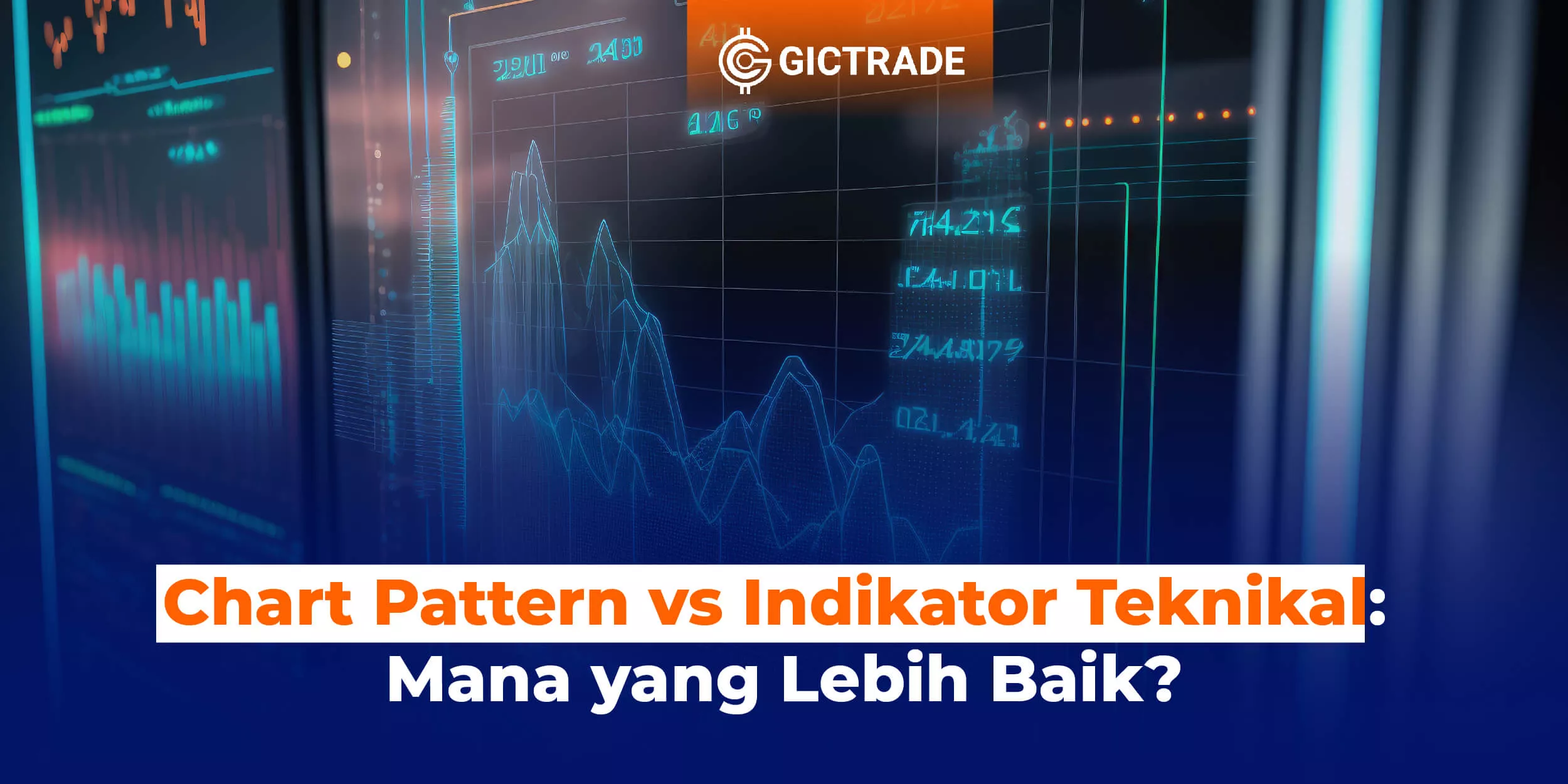Chart Pattern vs Technical Indicator - In the world of stock trading, there are many factors to consider in order to make smart decisions. Two important concepts that are often used in technical analysis are chart patterns and technical indicators.
Both have a significant role in helping stock traders identify opportunities and make decisions based on proper analysis. However, there is a fundamental difference between these two concepts. This article will discuss the differences between chart patterns and technical indicators, as well as consider which is better in the context of stock trading in Indonesia.
Table of Contents
 (1).webp)
Chart Pattern: Introduction and Analysis
What is Chart Pattern?
Chart pattern Refers to certain patterns that are formed on the price chart of stocks or other financial instruments. This pattern arises due to the interaction between supply and demand in the market. Stock traders use these patterns to identify potential trends and price reversals.
Common chart patterns include the "double top" and "double bottom" patterns, the "head and shoulders" patterns, the "cup and handle" patterns, and more. Each pattern has a certain meaning and implication in technical analysis. By studying these patterns, stock traders can identify potentially profitable trading opportunities.
Advantages and Limitations of Chart Patterns
Chart patterns have several advantages that make them a popular technical analysis tool among stock traders. First, chart patterns can provide clear signals about price trends and potential reversals. This helps traders to make informed decisions in buying or selling stocks.
In addition, chart patterns are also relatively easy to understand and apply. Traders can use technical analysis software to automatically detect chart patterns on their price charts. This simplifies the process of pattern identification and saves time.
However, chart patterns also have limitations that need to be considered. First, chart patterns are not always accurate. There are situations where the pattern formed fails to give a valid signal. Traders should use other confirmations, such as technical indicators, to confirm the validity of the pattern before making trading decisions.
Technical Indicators: Introduction and Usage
What is Technical Indicator?
Technical Indicator is a mathematical formula applied to stock price data or other financial instruments. The main purpose of technical indicators is to provide information about price trends, momentum, market strength, and overbought or oversold conditions.
There are different types of technical indicators available, such as moving averages, relative strength index (RSI), stochastic oscillators, and more. Each indicator has a different mathematical formula and provides a unique perspective on the behavior of stock prices.
Advantages and Limitations of Technical Indicators
Technical indicators have several advantages that make them a useful analysis tool for stock traders. First, technical indicators can provide information about market conditions objectively. For example, the RSI indicator provides information about whether a stock is already overbought or oversold. This helps traders to identify potential price reversals.
In addition, technical indicators can provide faster trading signals than chart patterns. Indicators calculate price data in real-time and provide signals when certain conditions are met. This allows traders to respond quickly to the market and take advantage of rapid price movements.
However, technical indicators also have limitations. First, technical indicators often generate false signals that can confuse traders. Traders must understand the characteristics and drawbacks of each indicator they use to maximize their usefulness.
Here is a table of differences between chart patterns and technical indicators in the context of stock trading:
FAQs (Frequently Asked Questions)
Should chart patterns and technical indicators be used separately?
No, chart patterns and technical indicators can be used together to provide stronger confirmation. Traders can use chart patterns to identify potential price patterns, and then use technical indicators to confirm the validity of those patterns.
Are chart patterns more accurate than technical indicators?
It cannot be said that chart patterns are more accurate than technical indicators or vice versa. These two tools have different roles in technical analysis and can complement each other. Traders should use both wisely and combine them with other analyses to make informed decisions.
How to study chart patterns and technical indicators?
There are many books, online courses, and other resources available to learn chart patterns and technical indicators. Additionally, participating in a community of stock traders and discussing ideas with experienced traders can also help improve your understanding and skills in technical analysis.
Do chart patterns and technical indicators apply to all financial instruments?
Yes, chart patterns and technical indicators can be applied to a variety of financial instruments, including stocks, bonds, forex, and more. However, keep in mind that each instrument has unique characteristics that need to be considered in the analysis.
Are chartpatterns and technical indicators only useful for stock traders?
No, chart patterns and technical indicators can be used in a variety of trading types, including stocks, forex, commodities, and more. The basic principles of technical analysis remain the same, even though the instruments traded are different.
What to do if chart patterns and technical indicators give conflicting signals?
If chart patterns and technical indicators are giving conflicting signals, it is important to consider the overall market context and analyze other factors that can affect the price. Experience and in-depth understanding of the instruments traded also help in making informed decisions.
Get to Know GIC, a Trusted Trading Platform from Beginner to Expert!
Not familiar with GIC? Let's get acquainted. Unlike other conventional brokerage firms, GIC through the GICTrade platform provides a solution for traders who do not want to be charged with high trading fees. GICTrade is a peer-to-peer trading platform that brings together traders and market makers.
So, what is special about GICTrade? As a platform that brings together traders and market makers, you as a potential customer can certainly choose between the two, namely becoming a trader or a market maker.
GICTrade's role as a transaction venue provider can minimize costs and help maximize profits for traders and market makers as well as create a fair transaction atmosphere and results.
Traders will benefit from the absence of commission fees and low swap fees and spreads due to the presence of market makers as liquidity providers. You can also join the trader community on GICtrade's Telegram to ask fellow traders directly about their trading experience.
Also follow GIC's Instagram to get webinar information and various attractive prizes. In addition, on YouTube GIC, traders can also learn to trade for free! What are you waiting for? Get more features that fully support you to start investing and trading forex through GIC. Make transactions simpler, safer, and more profitable.
Conclusion
In stock trading, both chart patterns and technical indicators have an important role in technical analysis. Chart patterns help traders identify potentially profitable price patterns, while technical indicators provide information about market conditions objectively. These two tools can be used together to provide stronger confirmation in trading decision-making.
It is important to understand the advantages and limitations of each of these analysis tools. No single tool is completely reliable. Stock traders should use a holistic approach in technical analysis, incorporating chart patterns, technical indicators, and other relevant factors to make smart trading decisions.
| Also Read : Trading With Chart Patterns: How to Calculate Stop Loss and Take Profit |
 Last:
Last: 






